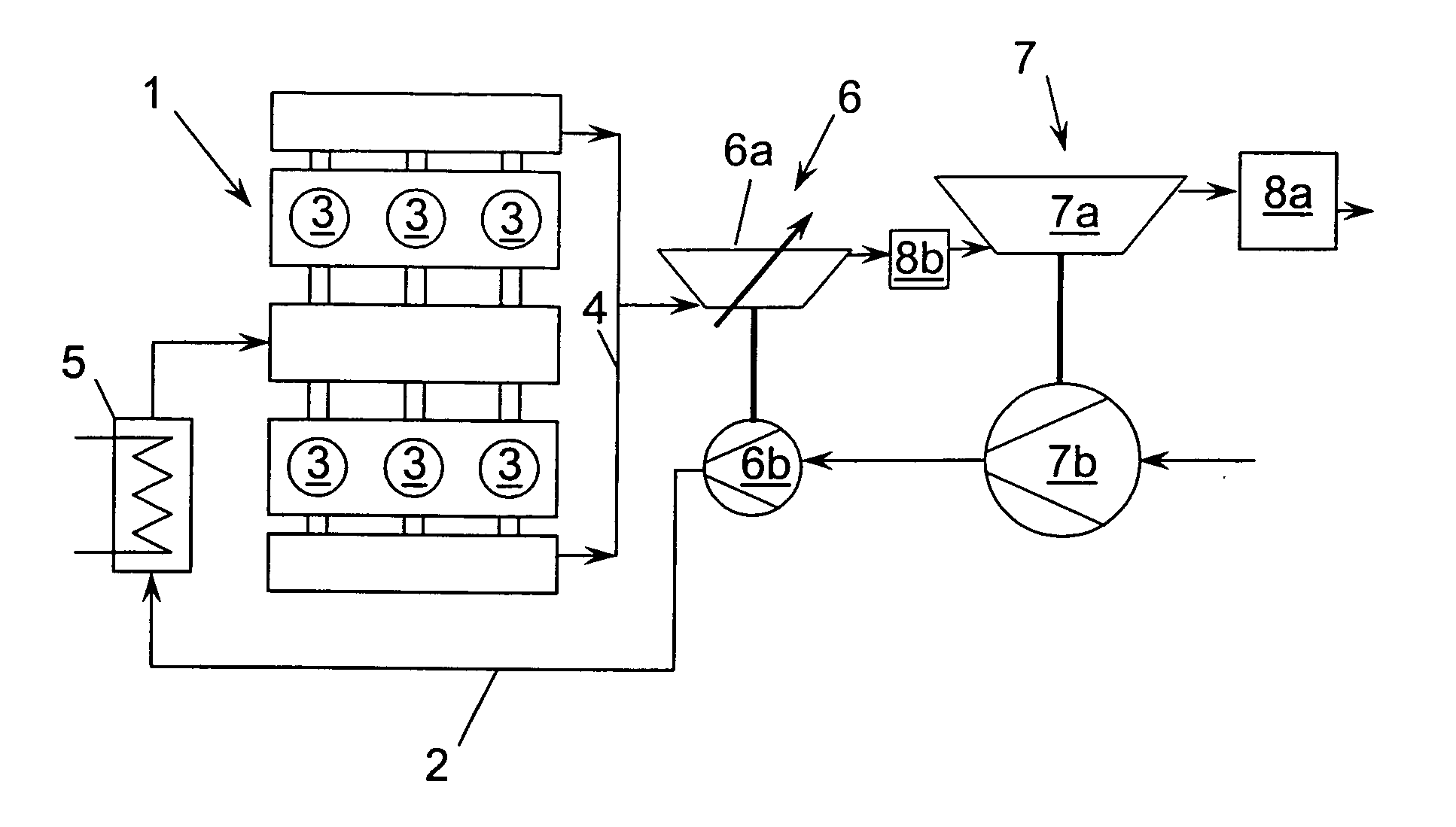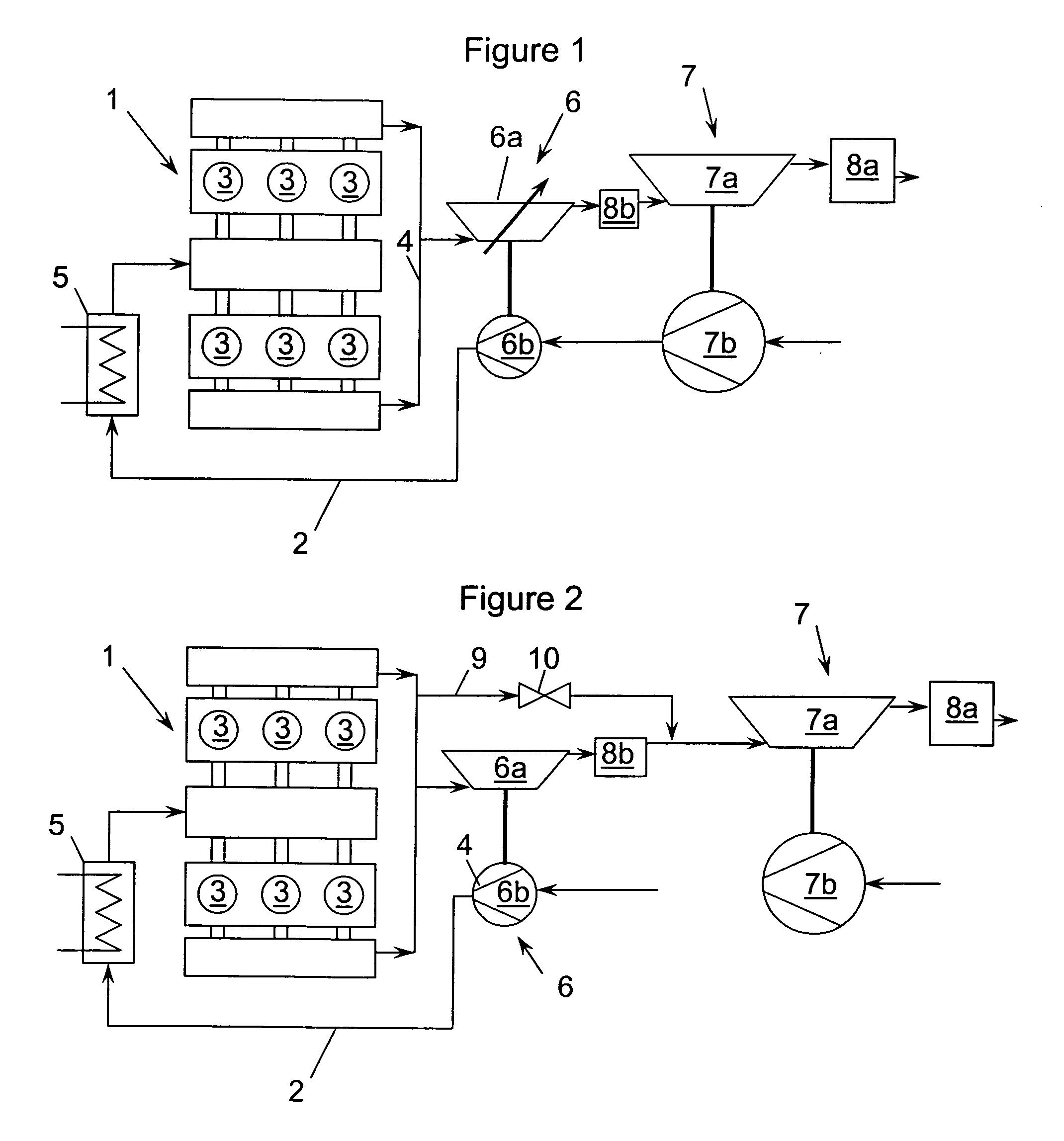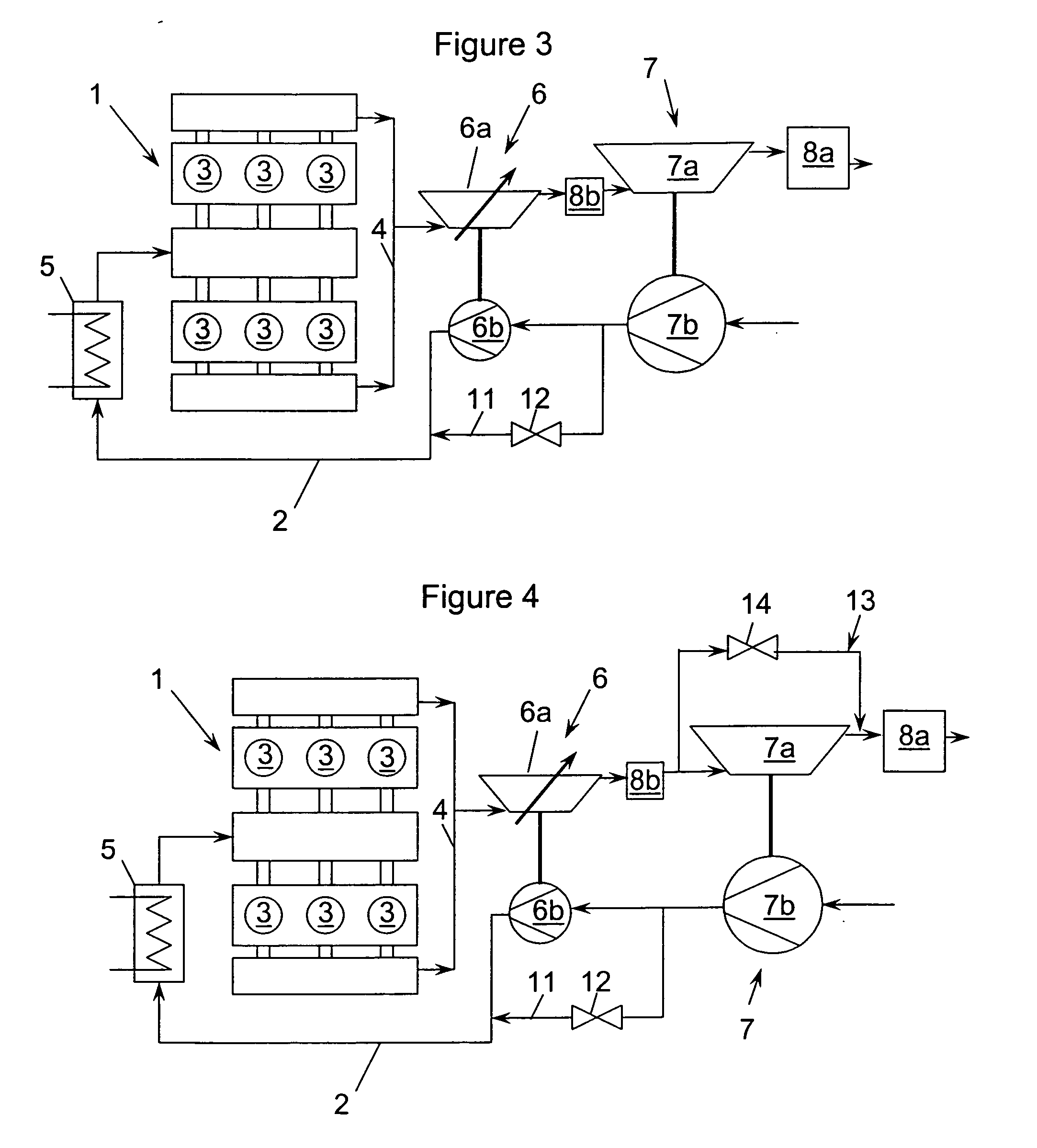Pressure-charged internal combustion engine
a technology of internal combustion engine and pressure-charged engine, which is applied in the direction of engines, machines/engines, mechanical equipment, etc., can solve the problems of reducing efficiency, affecting efficiency, and reducing power provided, so as to improve emission behavior and improve emission characteristics
- Summary
- Abstract
- Description
- Claims
- Application Information
AI Technical Summary
Benefits of technology
Problems solved by technology
Method used
Image
Examples
first embodiment
[0068]FIG. 1 shows a pressure-charged internal combustion engine 1, taking a six-cylinder V engine as an example.
[0069] The internal combustion engine 1 has an intake line 2 which supplies the cylinders 3 with fresh air and also an exhaust-gas line 4 which serves to discharge the combustion gases or the exhaust gas. Furthermore, the internal combustion engine 1 is equipped with two exhaust-gas turbochargers 6, 7 which are connected in series, so that, on the one hand, the exhaust-gas flow flows through two turbines 6a, 7a arranged one behind the other in the exhaust-gas line 4, whereas the charge-air flow is passed through to compressors 6b, 7b arranged one behind the other in the intake line 2. A first exhaust-gas turbocharger 6 arranged close to the exhaust of the internal combustion engine 1 serves as high-pressure stage 6. A second exhaust-gas turbocharger 7 arranged downstream of the exhaust-gas line 4 or upstream of the intake line 2 of the first exhaust-gas turbocharger 6 ser...
second embodiment
[0074]FIG. 2 schematically shows the pressure-charged internal combustion engine 1. Only the differences from the embodiment shown in FIG. 1 are to be discussed, for which reason reference is otherwise made to FIG. 1. The same designations have been used for the same components.
[0075] In contrast to the embodiment shown in FIG. 1, the high-pressure turbine 6a in the internal combustion engine 1 shown in FIG. 2 is designed with a fixed, i.e., invariable, turbine geometry. In addition, a first bypass line 9 is provided, which branches off from the exhaust-gas line 4 upstream of the turbine 6a of the first exhaust-gas turbocharger 6 and opens into the exhaust-gas line 4 again downstream of the second exhaust-gas aftertreatment system 8b, a valve 10 being arranged in this first bypass line 9.
[0076] The bypass line 9 serves as an exhaust-gas bleed line. The high-pressure turbine 6a is thus designed in a similar manner to a wastegate turbine, it being possible for the second exhaust-gas ...
fourth embodiment
[0080]FIG. 4 schematically shows the pressure-charged internal combustion engine 1. In contrast to the embodiment shown in FIG. 3, a third bypass line 13 is provided for the purposes of exhaust-gas bleeding, this third bypass line 13 branching off from the exhaust-gas line 4 upstream of the turbine 7a of the second exhaust-gas turbocharger 7 and opening into the exhaust-gas line 4 again upstream of the first exhaust-gas aftertreatment system 8a, it being possible for the turbine 7a of the second exhaust-gas turbocharger 7 to be bypassed by this second bypass line 13, a valve 14 being provided in the third bypass line 13 for controlling the exhaust-gas bleeding. The low-pressure turbine 7a is thus designed in the form of a wastegate turbine.
PUM
 Login to View More
Login to View More Abstract
Description
Claims
Application Information
 Login to View More
Login to View More - R&D
- Intellectual Property
- Life Sciences
- Materials
- Tech Scout
- Unparalleled Data Quality
- Higher Quality Content
- 60% Fewer Hallucinations
Browse by: Latest US Patents, China's latest patents, Technical Efficacy Thesaurus, Application Domain, Technology Topic, Popular Technical Reports.
© 2025 PatSnap. All rights reserved.Legal|Privacy policy|Modern Slavery Act Transparency Statement|Sitemap|About US| Contact US: help@patsnap.com



